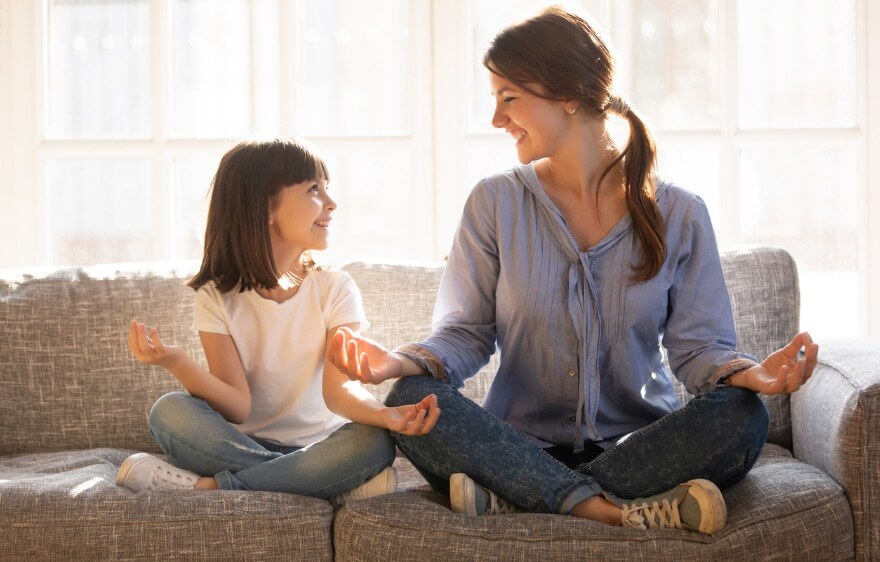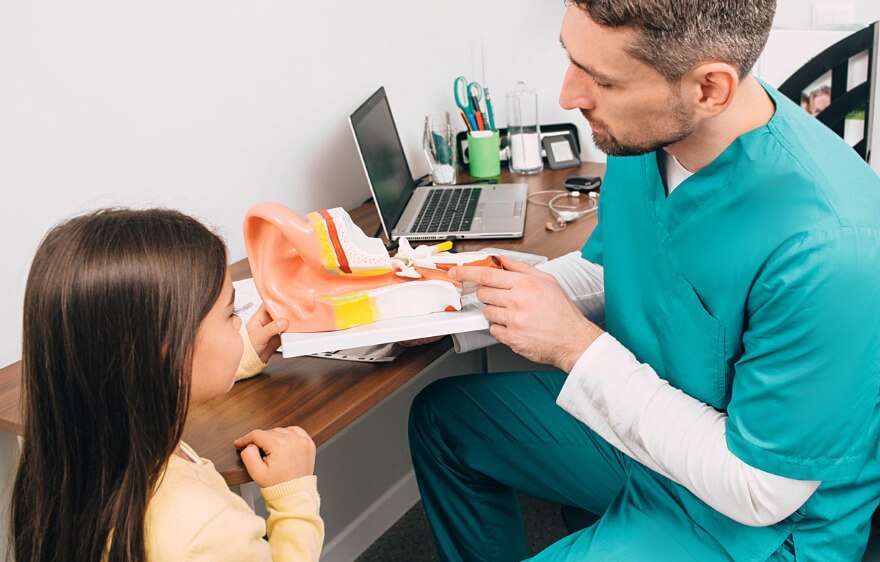As a pediatric occupational therapist (OT), you know that setting clear, measurable goals is the cornerstone of effective therapy. However, in some situations, developing occupational therapy goals that are both practical and motivating can be challenging, especially when you’re working with kiddos who might rather be looking at a screen than practicing fine motor skills.
Whether you’re a seasoned OT or just starting out, it’s always helpful to have fresh ideas for your toolbox. This blog will provide you with examples of occupational therapy goals that are practical, achievable, and fun for both you and the kids you’re helping.
12 Examples Of Occupational Therapy Goals
Let’s dive into some examples of occupational therapy goals tailored for various developmental areas. Each example includes a goal statement, just like the ones you would put down in your documentation.
1. Fine Motor Skills
Fine motor skills are crucial for everyday tasks like buttoning a shirt, holding a pencil, or picking up small objects. Strengthening these skills can be a game-changer for a child’s independence. If you’re ready to start, try these hand-strengthening exercises for kids!
Sample Occupational Therapy Goal:
Within eight weeks, client will improve fine motor coordination as evidenced by the ability to button a shirt independently, four out of five trials, as measured by therapist observation.
Fun Twist: Why not turn the goal into a superhero training session? Frame it as “Super Button Powers,” where the child is in training to master their super suit. The more buttons they can manage, the closer they get to their superhero status!
2. Gross Motor Skills
Gross motor skills involve larger movements like walking, jumping, and balancing. These are foundational for physical activities and overall coordination.
Sample Occupational Therapy Goal:
In 12 weeks, client will demonstrate improved gross motor skills by jumping forward with both feet simultaneously, at least 12 inches, in three out of five trials, as observed during therapy sessions.
Fun Twist: Transform the therapy room into an adventure zone! Create an obstacle course where jumping is key to overcoming challenges like “lava pits” or “river crossings.” The more successful jumps, the more levels they conquer!
3. Handwriting
Handwriting is a complex task that requires fine motor skills, hand-eye coordination, and cognitive processing. Many children struggle with handwriting, so setting achievable occupational therapy goals in this area can be incredibly beneficial.
Sample Occupational Therapy Goal:
Within 10 weeks, client will improve handwriting legibility by writing their name clearly and correctly on four out of five trials, with proper letter formation and spacing, as measured by therapist observation.
Fun Twist: Turn this into a secret agent mission where the child has to “sign” their secret code name to unlock new levels. Every neatly written name earns them a new rank in the secret agent world!
4. Sensory Processing
Sensory processing involves how the brain interprets and responds to sensory information. For kids with sensory processing issues, setting goals that help manage their sensory needs is key to their success in daily activities.
Sample Occupational Therapy Goal:
Over the next six months, client will improve sensory processing skills by independently utilizing sensory strategies, such as using a weighted blanket or noise-canceling headphones, during challenging activities in four out of five opportunities, as reported by parents and observed by the therapist.
Fun Twist: Imagine the therapy room as a sensory exploration station. The child can become a “sensory scientist,” experimenting with different tools and strategies to find what helps them the most. Each successful use of a sensory strategy could be another “experiment completed.”
5. Self-Care Skills
Self-care skills are the day-to-day tasks that children need to master to become independent, such as dressing, brushing teeth, or feeding themselves.
Sample Occupational Therapy Goal:
In 16 weeks, client will independently complete all steps of brushing their teeth, including applying toothpaste, brushing for two minutes, and rinsing for four out of five days, as reported by parents and verified by therapist observation.
Fun Twist: Make it fun by creating a morning routine challenge! Kiddos can earn stickers or points each time they complete their self-care tasks independently, working toward a fun reward like choosing the movie for family night or a special treat.
6. Social Interaction
Social interaction goals are about helping children navigate their relationships with others — whether it’s making friends, taking turns, or communicating effectively.
Sample Occupational Therapy Goal:
Within 20 weeks, client will improve social interaction skills by initiating at least three appropriate peer interactions during playtime, without prompts, in four out of five opportunities, as observed by the therapist.
Fun Twist: Turn this into a “Friendship Quest” where the child earns “friendship points” each time they initiate a positive interaction. Accumulate enough points, and they get to be crowned “Friendship Champion” of the week!
7. Attention and Focus
For children who have difficulty staying on task, setting occupational therapy goals to improve attention and focus can lead to better performance in school and daily activities.
Sample Occupational Therapy Goal:
Over the next 12 weeks, client will demonstrate increased attention to task by staying engaged in a structured activity such as a puzzle or worksheet for at least 10 minutes, with no more than one prompt, on four out of five opportunities, as measured by therapist observation.
Fun Twist: Introduce the concept of a “Focus Ninja.” Kiddos can earn “focus stars” for every task they can complete within the set time. These stars can be exchanged for small rewards or fun activities, reinforcing their ability to concentrate.
8. Executive Functioning
Executive functioning skills include planning, organizing, and managing time and tasks. These skills are crucial for children to succeed academically and in everyday life.
Sample Occupational Therapy Goal:
In 18 weeks, client will improve executive functioning by independently organizing and completing a three-step task, such as homework or chores in the correct order on four out of five days, as reported by parents and confirmed by therapist observation.
Fun Twist: Make this a “Task Master Challenge!” Kids can receive a checklist that looks like a treasure map, where each completed task leads to a hidden treasure such as a fun sticker or a small toy. The more tasks completed, the more treasures they find!
9. Emotional Regulation
Helping children manage their emotions is vital for their social and academic success. Occupational therapy goals in this area can focus on identifying emotions, using coping strategies, and responding appropriately to challenges.
Sample Occupational Therapy Goal:
Within 14 weeks, client will improve emotional regulation by using identified coping strategies such as deep breathing or counting to 10, to calm down during stressful situations, with no more than one prompt, on four out of five opportunities, as observed by the therapist.
Fun Twist: Create an “Emotion Hero” program where kids learn about different “emotion powers” and how to use them. Every time they successfully manage their emotions, they can earn an “Emotion Hero Badge” to add to their collection!
10. Play Skills
Play is the language of childhood, and for kids who struggle with play skills, targeted occupational therapy goals can make a huge difference in their ability to engage with peers and explore their world.
Sample Occupational Therapy Goal:
In 10 weeks, client will improve play skills by engaging in cooperative play with peers for at least 10 minutes, sharing and taking turns without prompts, on three out of five opportunities, as observed during therapy sessions.
Fun Twist: Turn the therapy session into a “Play Pal Party.” Kiddos can collect “Play Pal Points” each time they engage in cooperative play. These points could be used for fun activities or as toys in future sessions.
11. Visual Motor Integration
Visual motor integration involves coordinating visual information with motor output, essential for tasks like catching a ball or copying shapes.
Sample Occupational Therapy Goal:
Over the next 12 weeks, client will improve visual motor integration by correctly copying four out of five basic shapes, such as a circle, square, or triangle, as observed during therapy sessions.
Fun Twist: Make it a “Shape Safari,” where kids become explorers on a mission to find and draw the “wild shapes” hiding in the therapy room. Each shape they capture with their pencil brings them closer to completing their safari adventure!
12. Feeding Skills
Feeding skills are vital for independence, and challenges in this area can impact a child’s nutrition and social experiences.
Sample Occupational Therapy Goal:
In 16 weeks, client will demonstrate improved feeding skills by independently using utensils to eat a full meal without spilling on four out of five days, as observed by parents and confirmed by the therapist.
Fun Twist: Turn mealtimes into a “Dine Like a Champion” event. Each successfully completed meal without spills earns them a spot at the “Champion’s Table,” where they can enjoy a special treat or choose the next meal’s menu.
Your Goals, Your Journey
Setting meaningful, achievable occupational therapy goals is at the heart of what you do as an occupational therapist. Whether you’re working on fine motor skills or emotional regulation, the key is to tailor each goal to the unique needs of your clients — and to make the process as enjoyable as possible! By turning therapy goals into fun, engaging activities, you not only keep your kiddos motivated but also make each session something they look forward to. If you co-treat with PTs, we also have some helpful physical therapy goals!
For OTs on the lookout for a new challenge or who want to bring creativity to a fresh environment, pediatric home health can be a great fit. Working in pediatric occupational therapy in a home setting allows you to bring your innovative ideas into the homes of children who need them most. Care Options for Kids is committed to bringing families and occupational therapists together to achieve the highest levels of health, wellness, and happiness. We recruit and support specialists who provide the best in-home care while empowering children to reach their greatest potential and level of activity.
So, what’s your next goal? Whether it’s crafting the perfect therapy plan or exploring new career opportunities, the sky’s the limit. Keep being the creative, compassionate therapist that you are, and watch as you and your clients reach new heights.
Join the Care Options For Kids Team!
Are you ready for meaningful work that comes with benefits and not burnout? Join the compassionate care team that helps children and families live their best lives. Our clinicians provide best-in-class pediatric nursing, therapy, and school-based services. We bring individualized care to children where they live, work, and play. We have opportunities in homes, schools, and clinics across the country.
Apply at Care Options for Kids now. We make it easy to start so you can make a difference as soon as possible.






